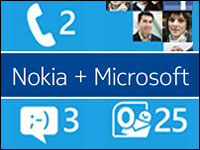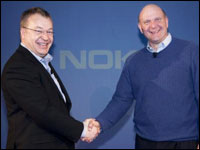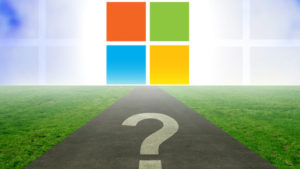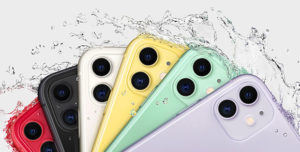
In this column, you will find answers to how Nokia and Microsoft can succeed in the smartphone marketplace, and even how RIM can be saved. First I’ll explore the current problem, then offer my solution.
Through the late 1990s Motorola led. It missed the change from analog to digital, though, and over the last decade, Nokia grew to become the No. 1 cellular handset maker. During the last several years, the tide began turning again. Nokia tried just about everything it could think of, but still could not break into the fast-growing smartphone space.
Microsoft has had the same problem breaking into smartphones, and it has been trying for even longer. These two companies’ solution is to get together. To pool their resources and deliver something that will knock our socks off.
The question I have is simple: Will this work? No way to know at this point. Either they will be able to pull the rabbit out of the hat and delight everyone, or they won’t.
Even though these are two large, established and successful companies, getting together and becoming successful is still a very long shot. Remember, Microsoft struggled for years.
Making Waves
There is a solution, however. Remember the Wave I discussed a few weeks ago? I think it is clear that these two companies have passed over the top and are on the way down the other side. What they have to do now is become hot again, relevant again in a new and growing area — like smartphones.
I can see the problem plain as day, and I can see the solution. Neither of them has solved the problem yet. It is easy to explain, but apparently very difficult to fix for these companies. Yet they have to.
First, what they have to do is update the technology and the brand. They also have to get closer to the customer in ways we have not seen except in companies like Apple and Google. That is it. Simple. This is not brain surgery.
Winning depends on the right thinking starting at the top and working its way down through the entire organization. Apple and Google have incredible new technology and an incredible new brand identity wrapping the customer up in a special feeling of youth and excitement and adventure. They feel connected to these brands and breakthrough technologies. They feel connected. Period.
However, as this new and exploding industry begins to mature, there is a new opportunity. A large segment of older customers who are interested in what these smartphones and apps can do for them don’t feel as comfortable with them as younger people do.
This mature segment still buys from Apple and Google because these companies seem to have a lock on the smartphone space.
mHealth on the Horizon
Remember, the smartphone space is not new. Just a handful of years ago, it was led by RIM’s BlackBerry and Palm, and its focus was on the business community. Since these newcomers have entered, the excitement has spread beyond this segment.
The smartphone business has matured to another level. At this point, I think the smartphone pie can be sliced in different ways. The Wave has crested for first-generation smartphone products. BlackBerry is now crossing over the top and will start its decline unless RIM can reinvent. So this idea is important for RIM to consider.
This problem is not just about Nokia and Microsoft. It’s about the changing marketplace. It not just about youth and excitement. It is about the growth and maturing of the app marketplace.
There were only a few hundred apps four years ago. Now there are a few hundred thousand apps for the iPhone. Fewer for Android, but they are catching up. RIM BlackBerry has fewer in comparison, but is also still growing. Why?
The apps marketplace is exploding. We are starting to see an increasing number of important apps, not just games. Many of these are for our health. We can plug a blood pressure strap into the iPhone and not only monitor our own stats, but send the information to our doctor, plus get useful tips to motivate us and keep us on the right track. There are so many of these really great ideas that are just starting to hit the marketplace.
In fact, I have heard predictions that 500 million people will be using these medical health apps within five years. Frankly, I think we will do even more than that worldwide.
mHealth Apps are growing rapidly. So are eHealth Apps. I have been getting calls from companies attending this year’s CTIA conference who want to meet with me. This is an enormous opportunity for the companies, investors, patients and doctors.
Make It New Again
Today, Apple and Google battle it out in the marketplace for all customers. So what is the solution for companies like Nokia and Microsoft?
Rather than join that battle, why not redefine the space, create a new segment, and lead it. That is the key.
Think about Nokia and Microsoft. The job of updating their technology and their brand should not be that difficult. However, both keep shooting blanks. The problem is they keep competing on Google’s and Apple’s terms.
The solution is really simple. They have tried and failed to battle the changing marketplace on Google’s and Apple’s terms. What if they aim at a different target? What if Apple and Google aim at the youth marketplace, and Nokia and Microsoft aim at the older adult space? This has not been tried yet.
I have heard this so many times. Many adults like the idea of what is happening with smartphones, but simply think Apple and Google are overkill. They like the idea, but they want a version that is targeted at them — not their kids.
The devices don’t actually have to be that different. Just the marketing to create a different image in the mind of the customer. That’s all it would take.
With the amazing new line of apps pouring into the marketplace, there are plenty aimed at the older adult community as well as younger customers. In fact, these apps continue to grow. So why are older adults not marketed to? Good question.
The app marketplace was originally thought of as youth-focused, but in recent years we have seen quite a few hard-hitting apps. There may be tens of thousands of medical and health apps today so far, and we are just in the first inning of this game. Does this make sense?
Boiling It Down
Don’t compete directly with Apple and Google. Let them compete against each other. Don’t compete with them on their terms. They will win.
Instead, create a completely new segment. A place for older adults who also have needs for smartphones and apps. A place that is welcoming and embracing for the older adult community.
Marketing would be different than before. A new message for a new target audience. This is a brand new space. There is plenty of room for a new segment and a well-thought-out marketing strategy.
Sure, if you had a choice, you would rather be king in the youth-oriented marketplace. However, since there are two new kings battling right now, it might not be wise to enter that fray. Why not be king of the older-adult marketplace?
Can Nokia and Microsoft do it? Can RIM? Sure they can. We expect something new every year from both Apple and Google — and we seem to get it, don’t we? Why not a completely new market segment that can be dominated by Microsoft and Nokia and RIM?
This seems to make too much sense. The marketplace is enormous and continuing to grow rapidly. There will be different segments. The companies that create these segments generally lead in them. Create this new space now. Create the new brand names that lead this new slice.
Growth will look different. It will be a different model. However, it is still growth and will still be welcomed by the customers. In turn, that will make investors happy as the companies grow, which makes workers happy.
This is a way for these companies to finally win in the smartphone space. To create the next Wave, and to grow for the next decade and beyond.
The problem is, these are companies are used to leading the space. Can they re-throttle themselves so they can succeed? That is the question.
Smell the Coffee
I predicted this in a series of speeches and columns a few years ago. No one wanted to listen at the time. They can’t ignore it now. The youthful spark may have passed to Google and Apple, but the opportunity is still there for Nokia and Microsoft to create a new segment and win. They are strong companies with a desire to win.
Romance the customers in new ways. Once this flag is in the ground, you can then expand your brand into the youth marketplace from this position of strength. That should be a future chapter, but it could be a natural progression for customers who start out as young adults and grow.
So, Steve Ballmer and Stephen Elop, I suggest you do more than just create a new company. Instead, create your own new sector — and lead it.
That may be the smartest next step. Everyone wants you to succeed, but you have to play the right game. Media, customers, investors and workers will be on your side if you get up and hit it out of the park. This is your chance. Batter up.















































Social Media
See all Social Media